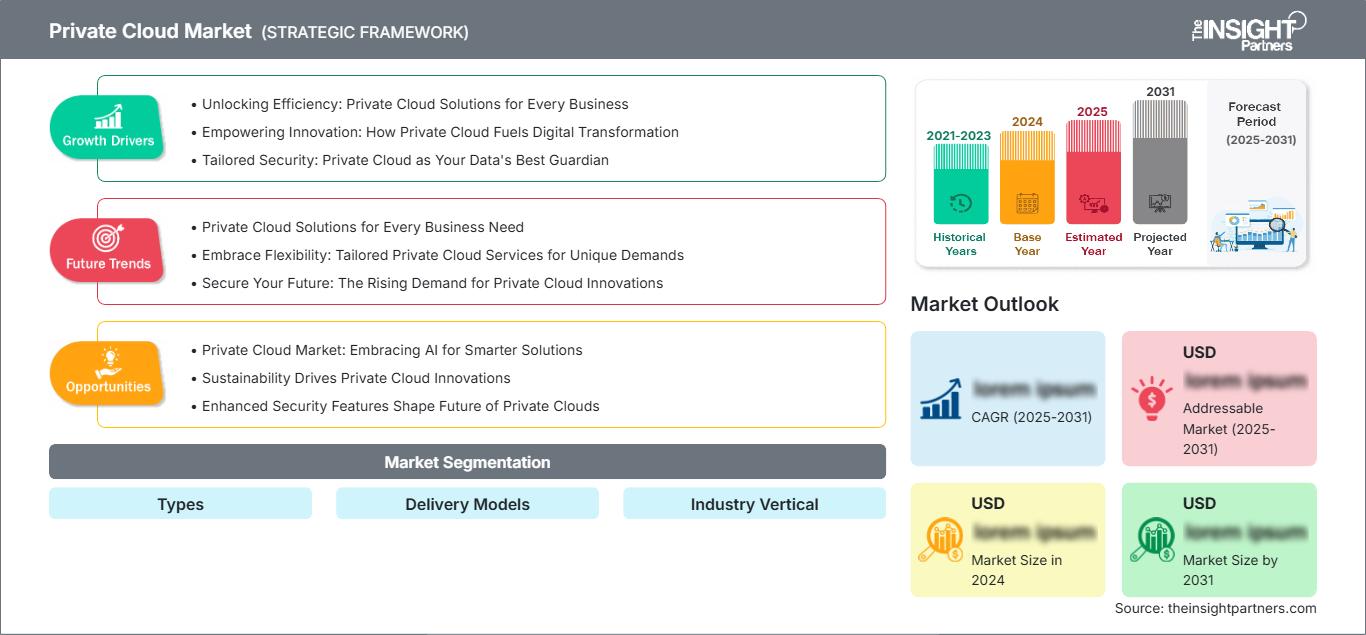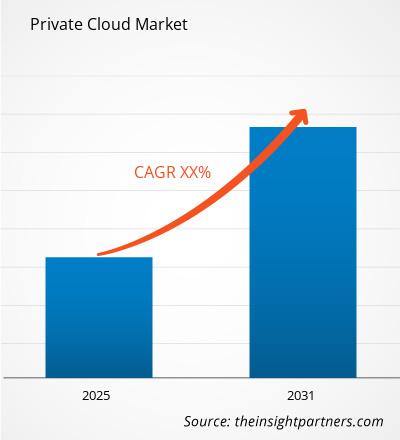Il rapido passaggio delle organizzazioni ai modelli di implementazione cloud ha già dimostrato che si è verificato un cambiamento di paradigma nel modo di fare business di un decennio fa. Le aziende non sono più interessate a gestire l'intero ecosistema dei loro prodotti e si concentrano piuttosto sulle competenze chiave per ottenere un vantaggio competitivo sul mercato. Il cloud computing si è affermato come una delle tecnologie più rapidamente adottate nel settore del software ed è diventato l'essenza delle operazioni aziendali nella maggior parte dei settori verticali. Pubblico o privato, ogni modello presenta i suoi vantaggi o svantaggi. Organizzazioni di ogni dimensione hanno abbracciato l'adozione della tecnologia del cloud computing, contribuendo così alla sua significativa crescita nell'ultimo decennio. Negli ultimi anni, il settore del software si è gradualmente spostato verso il modello di implementazione cloud grazie ai vantaggi dichiarati che offre. La natura altamente scalabile delle aziende le spinge a optare per servizi basati sul cloud, poiché i dati nei centri di archiviazione possono essere scalati verso l'alto o verso il basso in base alle esigenze degli utenti. La struttura tariffaria adottata dal fornitore di cloud pubblico è generalmente basata sul modello pay-as-per-use, il che rende altamente auspicabile per le organizzazioni l'investimento. Le competenze chiave delle aziende vengono mantenute, consentendo loro di rimanere competitive in questo mercato altamente dinamico. Il fattore principale che guida il mercato del cloud privato è la flessibilità offerta e la facilità di gestione. Inoltre, la privacy e la sicurezza per i dati altamente sensibili e mission-critical offerti dall'implementazione privata rappresentano un altro fattore trainante per il mercato del cloud privato. Anche la necessità di un'infrastruttura IT scalabile, flessibile, agile, semplice ed efficiente sta trainando notevolmente questo mercato. Nonostante i vantaggi offerti dal modello di implementazione del cloud privato, la crescita dei servizi di cloud privato ha incontrato pochi ostacoli. I costosi investimenti infrastrutturali necessari per creare un ambiente on-premise sono considerati un fattore limitante per la maggior parte delle organizzazioni. I requisiti di connettività Internet per questo modello cloud sono elevati e nei paesi in cui l'infrastruttura Internet non è di buona qualità, le organizzazioni si sono astenute dall'optarlo. Anche l'integrazione del modello con i sistemi legacy ha rappresentato un fattore problematico. Altri limiti per questo mercato includono le interruzioni e la mobilità dei dati. Il mercato globale del cloud privato è stato segmentato per tipologia in cloud privato dedicato e cloud privato virtuale. Inoltre, il mercato del cloud privato è stato frammentato in base a modelli di distribuzione come SaaS, PaaS e IaaS. La segmentazione del mercato del cloud privato viene effettuata anche in base a settori verticali, tra cui BFSI, telecomunicazioni, ospitalità e vendita al dettaglio, pubblica amministrazione, produzione e assistenza sanitaria. Il modello di cloud privato, essendo più costoso rispetto al modello di cloud pubblico, è adottato principalmente dalle organizzazioni più grandi. Le organizzazioni più attente alla privacy e alla sicurezza dei dati optano per modelli di distribuzione di cloud privato on-premise. Il Nord America è leader nel mercato globale del cloud privato grazie ai notevoli progressi tecnologici e allo sviluppo socioeconomico della regione. Le mutevoli esigenze dovute al miglioramento degli stili di vita sociali influenzano il modo in cui le aziende operano per soddisfare il maggior numero di utenti. Di conseguenza, si prevede che la regione manterrà il ruolo di leader nell'adozione nel periodo di previsione. L'Europa è un'altra regione con un'adozione significativa del mercato dei servizi di cloud pubblico e segue da vicino la regione nordamericana. Inoltre, la regione APAC sta recuperando costantemente terreno su queste tecnologie, con paesi in via di sviluppo come India e Cina che investono gradualmente in tecnologie di cloud pubblico. Tra i principali attori che operano nel mercato globale del cloud privato figurano, tra gli altri, IBM Corporation, Microsoft Corporation, Rackspace, Amazon Web Services, Cisco Systems, Inc., VMWare, Google, Inc., Oracle Corporation ed Eucalyptus.
Potrai personalizzare gratuitamente qualsiasi rapporto, comprese parti di questo rapporto, o analisi a livello di paese, pacchetto dati Excel, oltre a usufruire di grandi offerte e sconti per start-up e università
Mercato del cloud privato: Approfondimenti strategici

- Ottieni le principali tendenze chiave del mercato di questo rapporto.Questo campione GRATUITO includerà l'analisi dei dati, che vanno dalle tendenze di mercato alle stime e alle previsioni.
Approfondimenti regionali sul mercato del cloud privato
Le tendenze e i fattori regionali che hanno influenzato il mercato del cloud privato durante il periodo di previsione sono stati ampiamente spiegati dagli analisti di The Insight Partners. Questa sezione analizza anche i segmenti e la geografia del mercato del cloud privato in Nord America, Europa, Asia-Pacifico, Medio Oriente e Africa, America meridionale e centrale.
Ambito del rapporto sul mercato del cloud privato
| Attributo del rapporto | Dettagli |
|---|---|
| Dimensioni del mercato in 2024 | US$ XX million |
| Dimensioni del mercato per 2031 | US$ XX Million |
| CAGR globale (2025 - 2031) | XX% |
| Dati storici | 2021-2023 |
| Periodo di previsione | 2025-2031 |
| Segmenti coperti |
By Tipi |
| Regioni e paesi coperti | Nord America
|
| Leader di mercato e profili aziendali chiave |
|
Densità degli operatori del mercato del cloud privato: comprendere il suo impatto sulle dinamiche aziendali
Il mercato del cloud privato è in rapida crescita, trainato dalla crescente domanda degli utenti finali, dovuta a fattori quali l'evoluzione delle preferenze dei consumatori, i progressi tecnologici e una maggiore consapevolezza dei vantaggi del prodotto. Con l'aumento della domanda, le aziende stanno ampliando la propria offerta, innovando per soddisfare le esigenze dei consumatori e sfruttando le tendenze emergenti, alimentando ulteriormente la crescita del mercato.

- Ottieni il Mercato del cloud privato Panoramica dei principali attori chiave
- Analisi storica (2 anni), anno base, previsione (7 anni) con CAGR
- Analisi PEST e SWOT
- Valore/volume delle dimensioni del mercato - Globale, Regionale, Nazionale
- Industria e panorama competitivo
- Set di dati Excel
Report recenti
Testimonianze
Motivo dell'acquisto
- Processo decisionale informato
- Comprensione delle dinamiche di mercato
- Analisi competitiva
- Analisi dei clienti
- Previsioni di mercato
- Mitigazione del rischio
- Pianificazione strategica
- Giustificazione degli investimenti
- Identificazione dei mercati emergenti
- Miglioramento delle strategie di marketing
- Aumento dell'efficienza operativa
- Allineamento alle tendenze normative




















 Ottieni un campione gratuito per - Mercato del cloud privato
Ottieni un campione gratuito per - Mercato del cloud privato